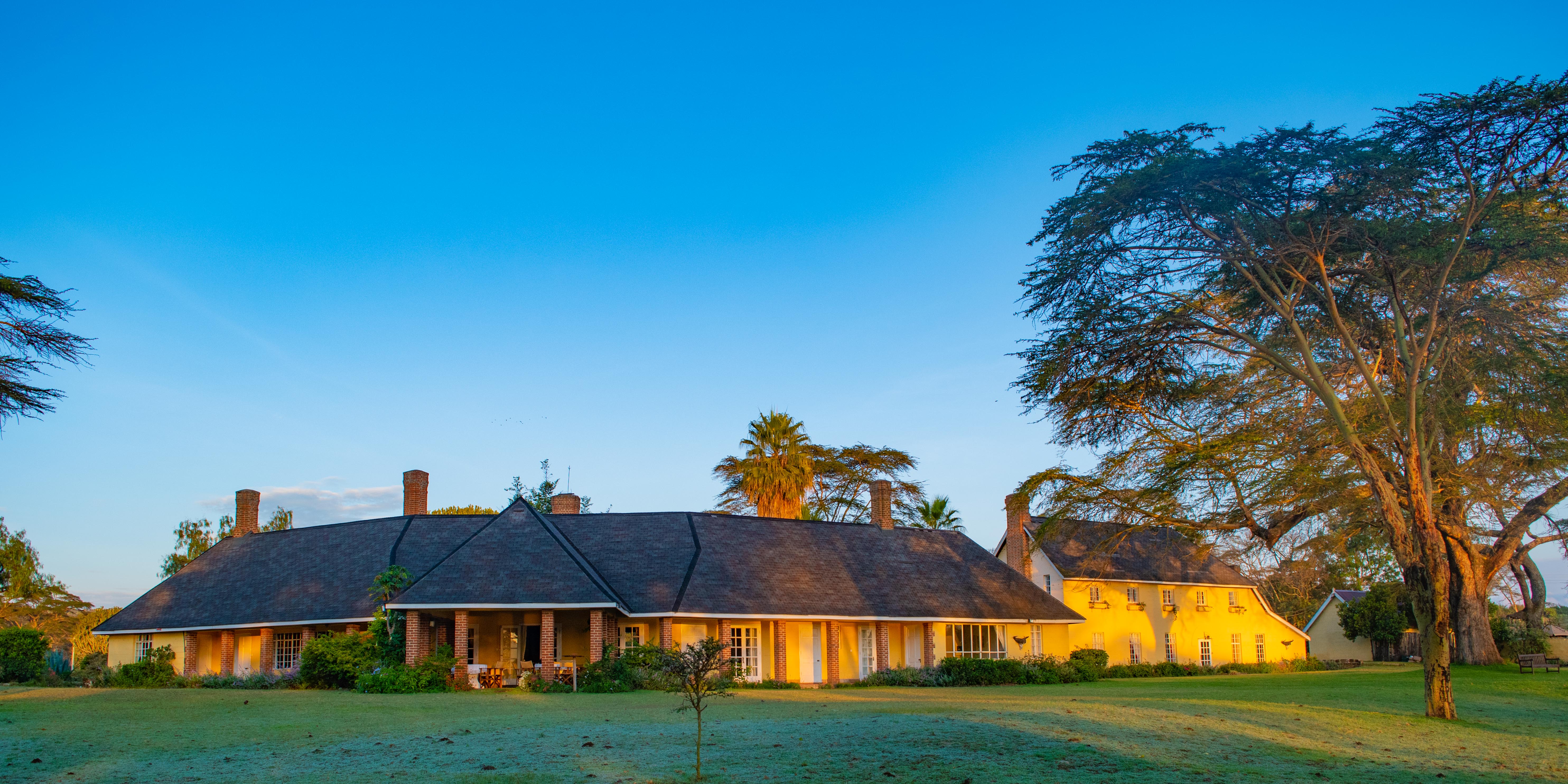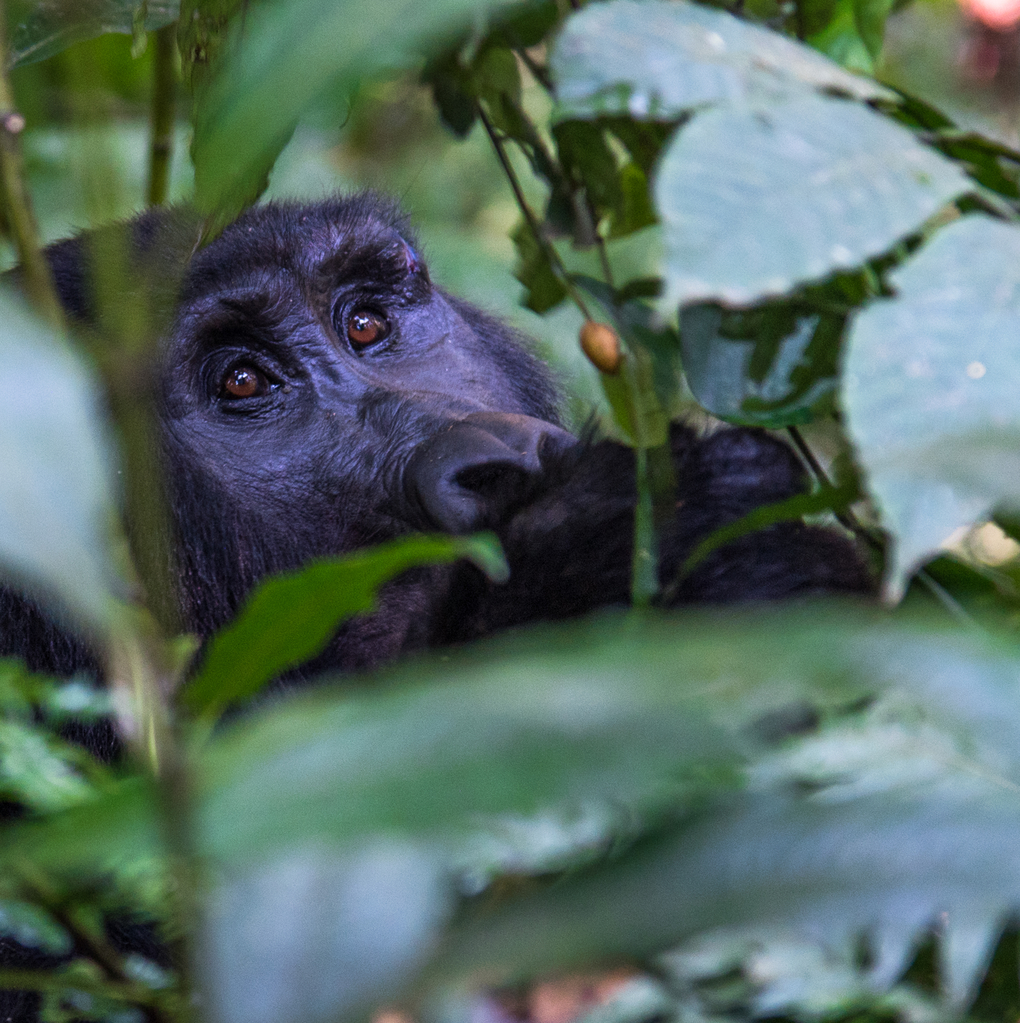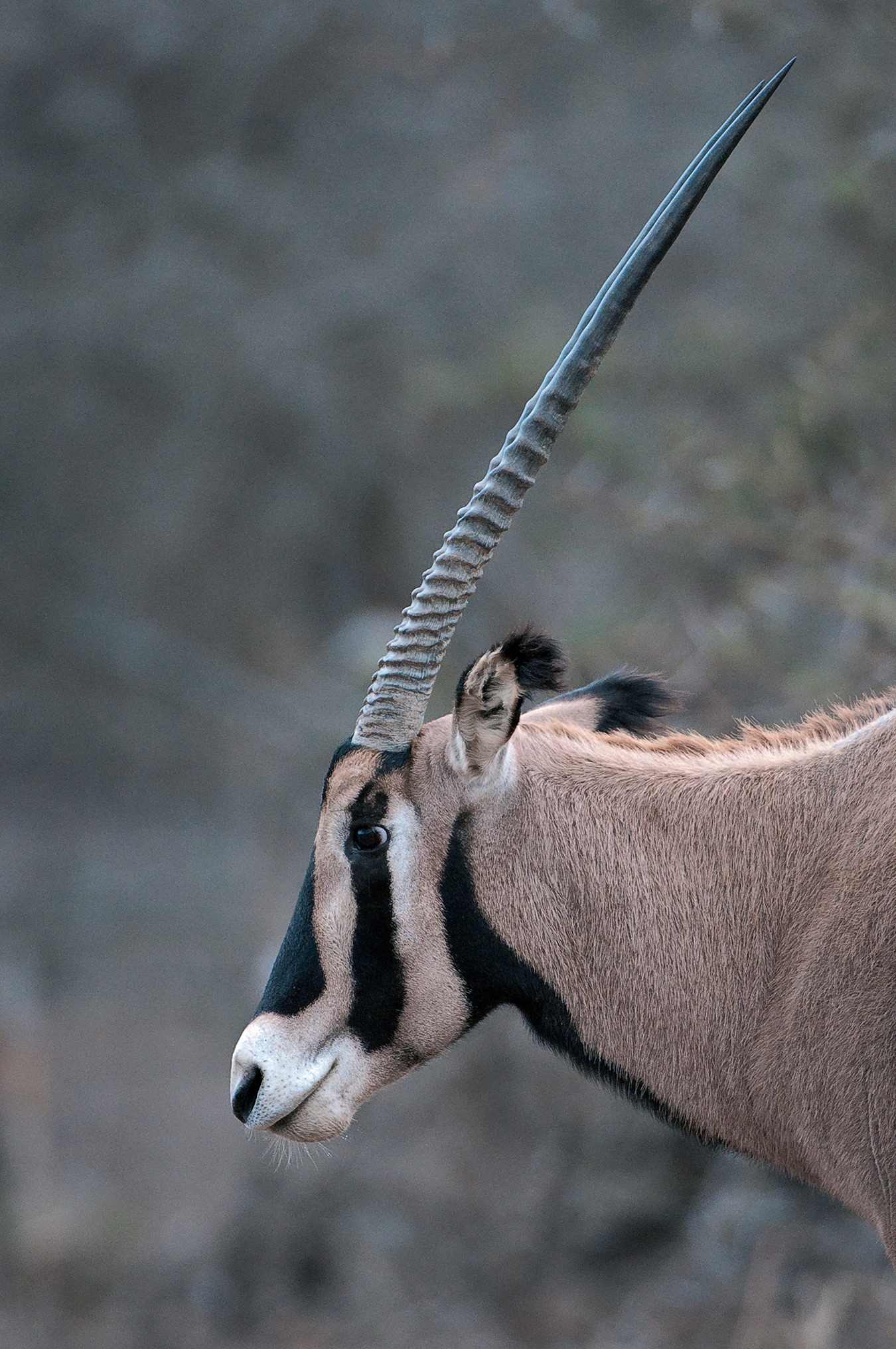-
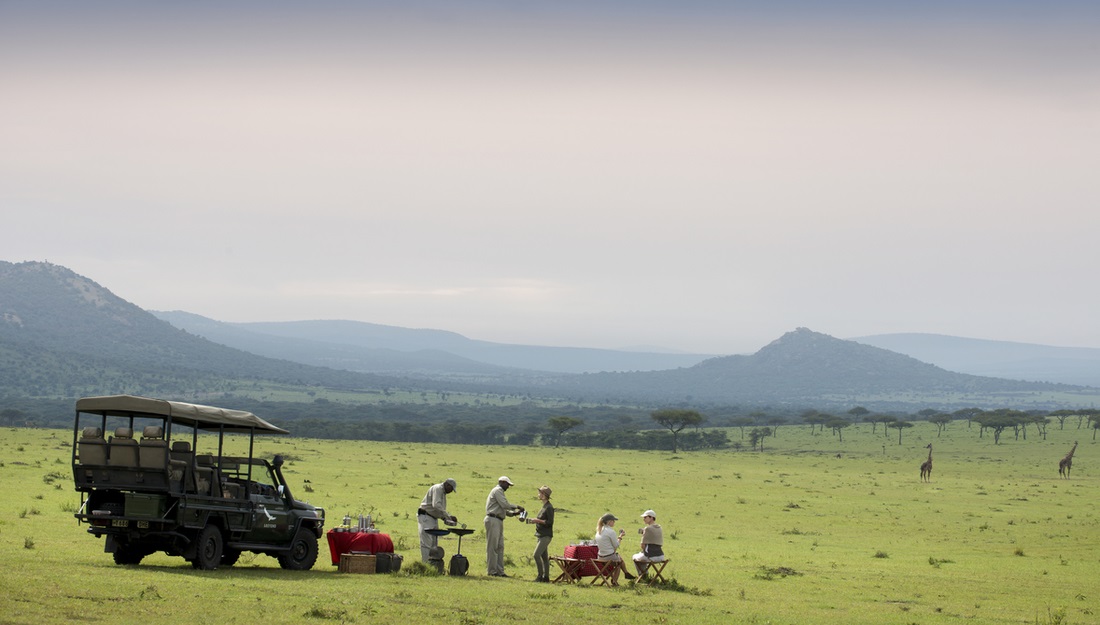
East Africa is often described as the world’s best destination for game viewing, being home to the globe’s most extensive national parks and game reserves.
-
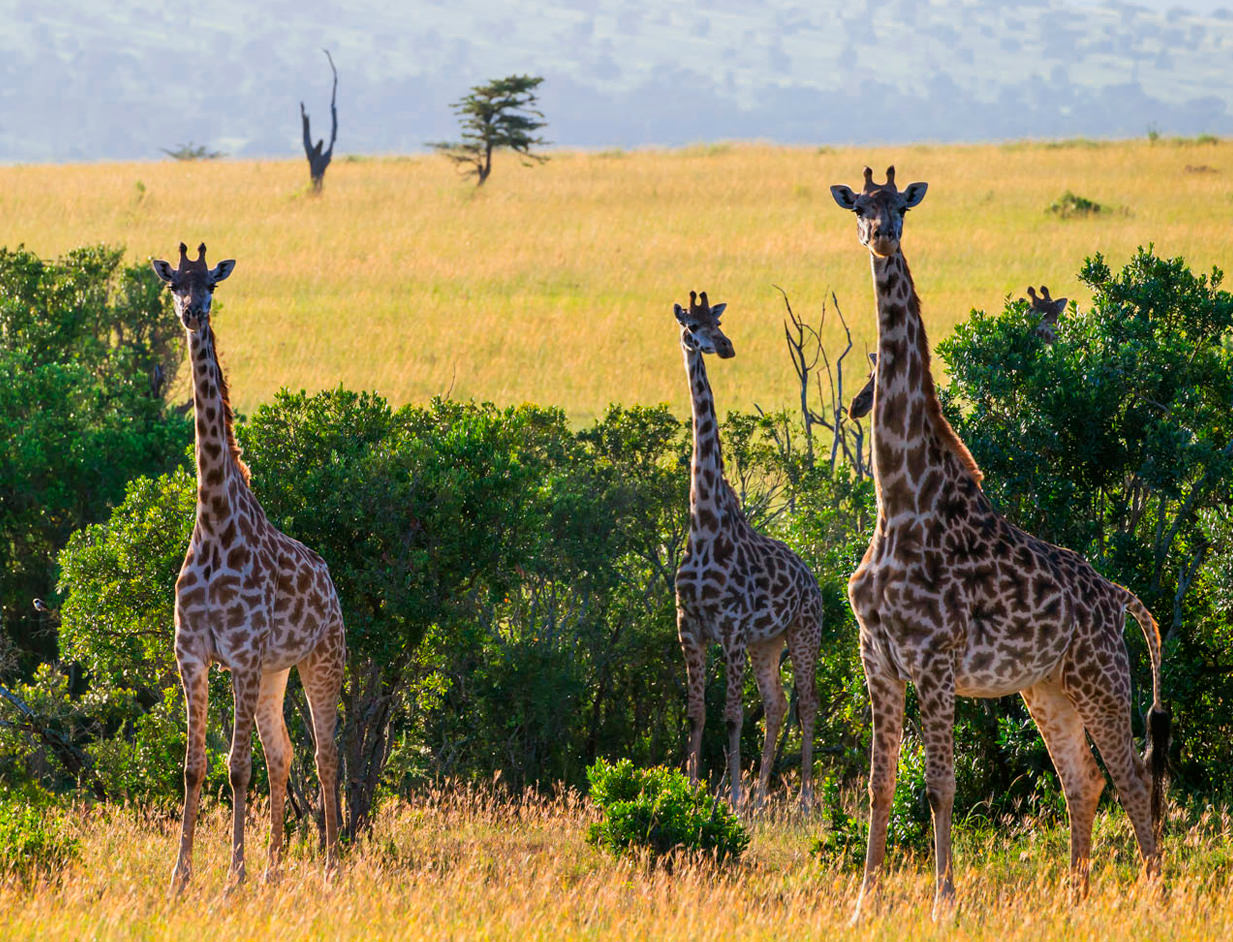
Giraffes are the elegant giants in the African savannah.
-

The formidable Maasai tribe, a semi-nomadic indigenous people, are the guardians of Kenya’s Masai Mara.
-

Nearly 20 years after it first opened, the much beloved andBeyond Bateleur Camp in Kenya’s Masai Mara reopened this past March after a complete rebuild.
-
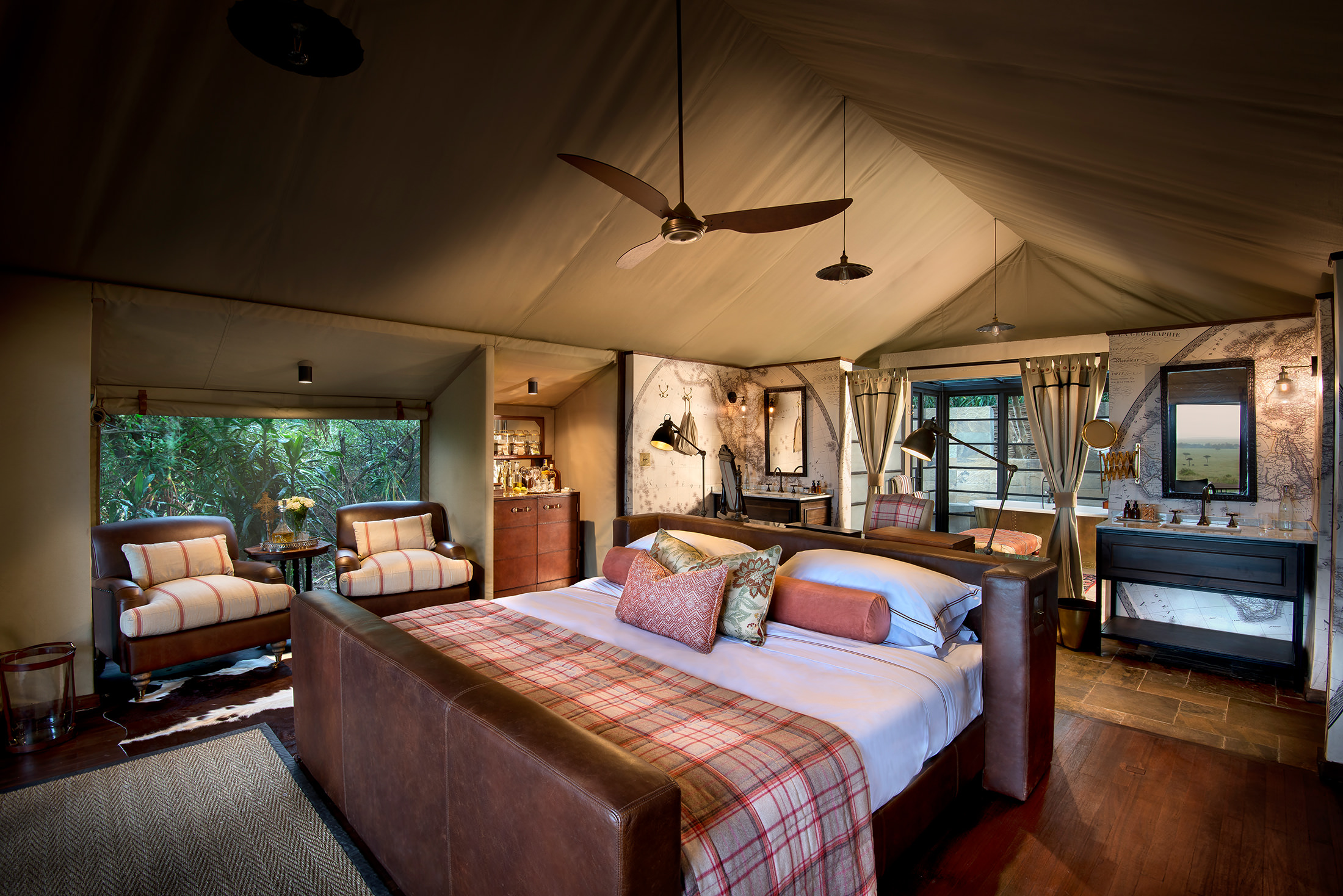
andBeyond Bateleur Camp is vintage safari elegance; a retreat for a maximum of 18 guests in nine tented suites.
-
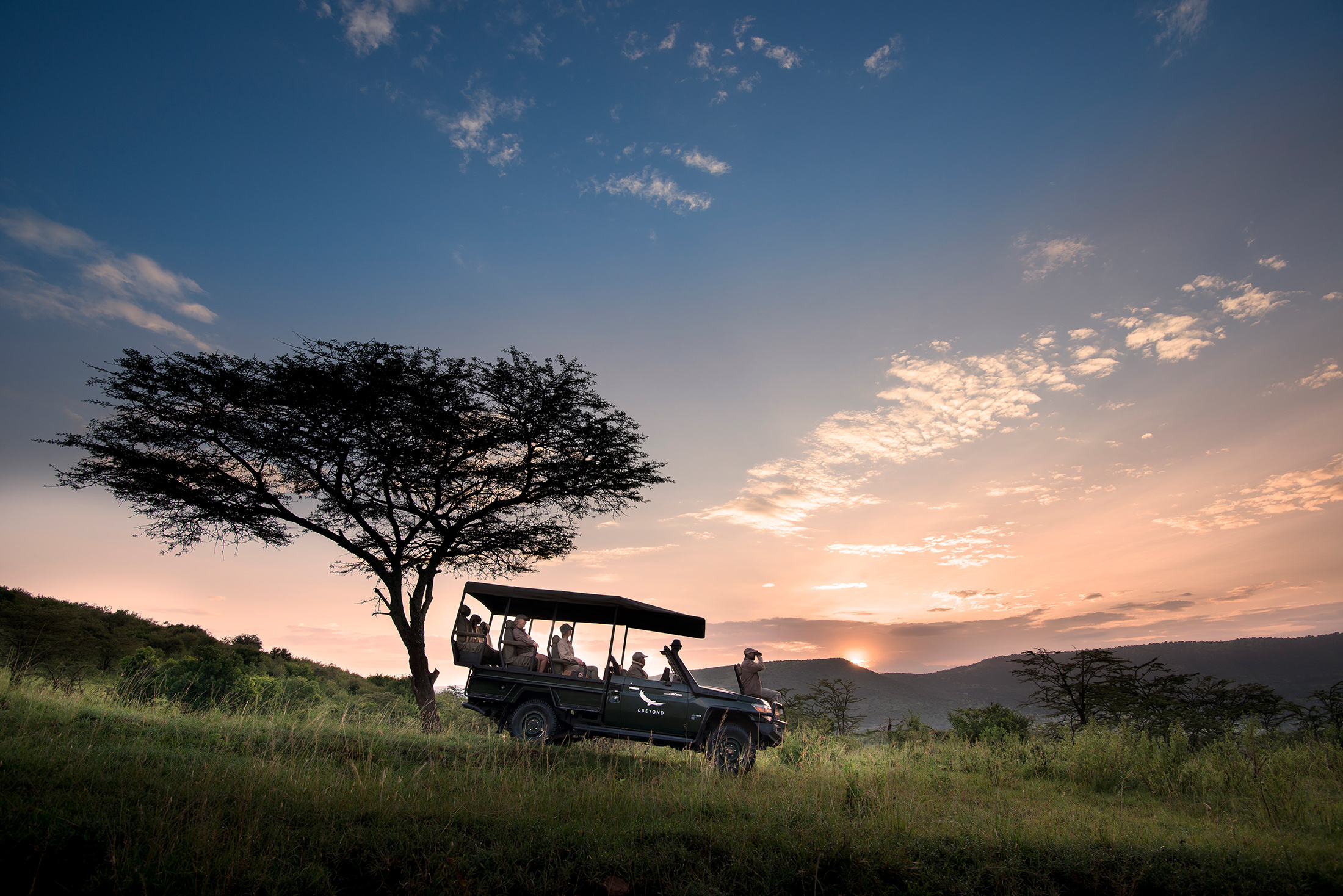
Dusk signals cocktail hour and the African savannah makes for the ideal backdrop for a sundowner in the bush.
-
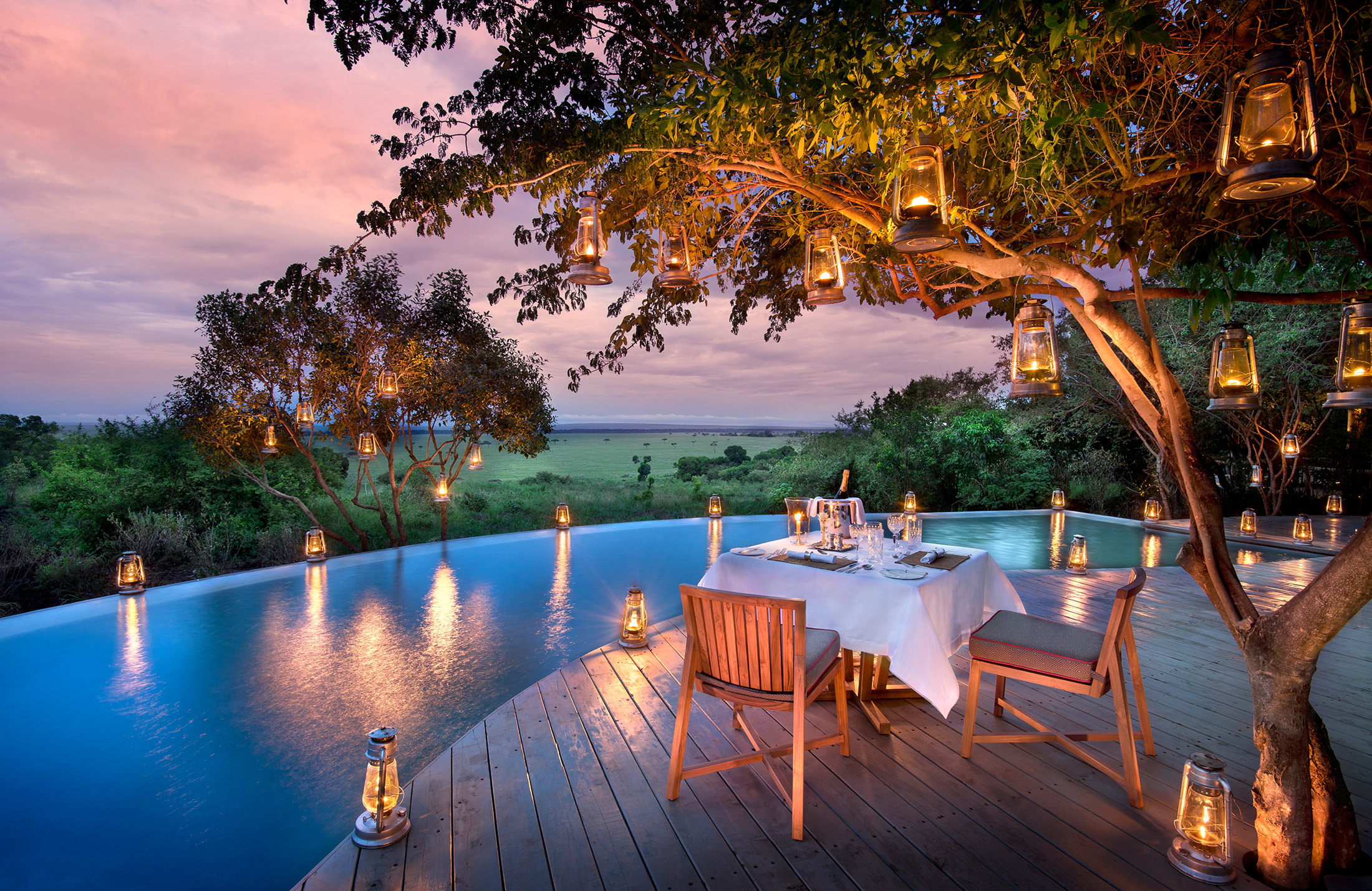
Dinner by candlelight at andBeyond Bateleur Camp.
-
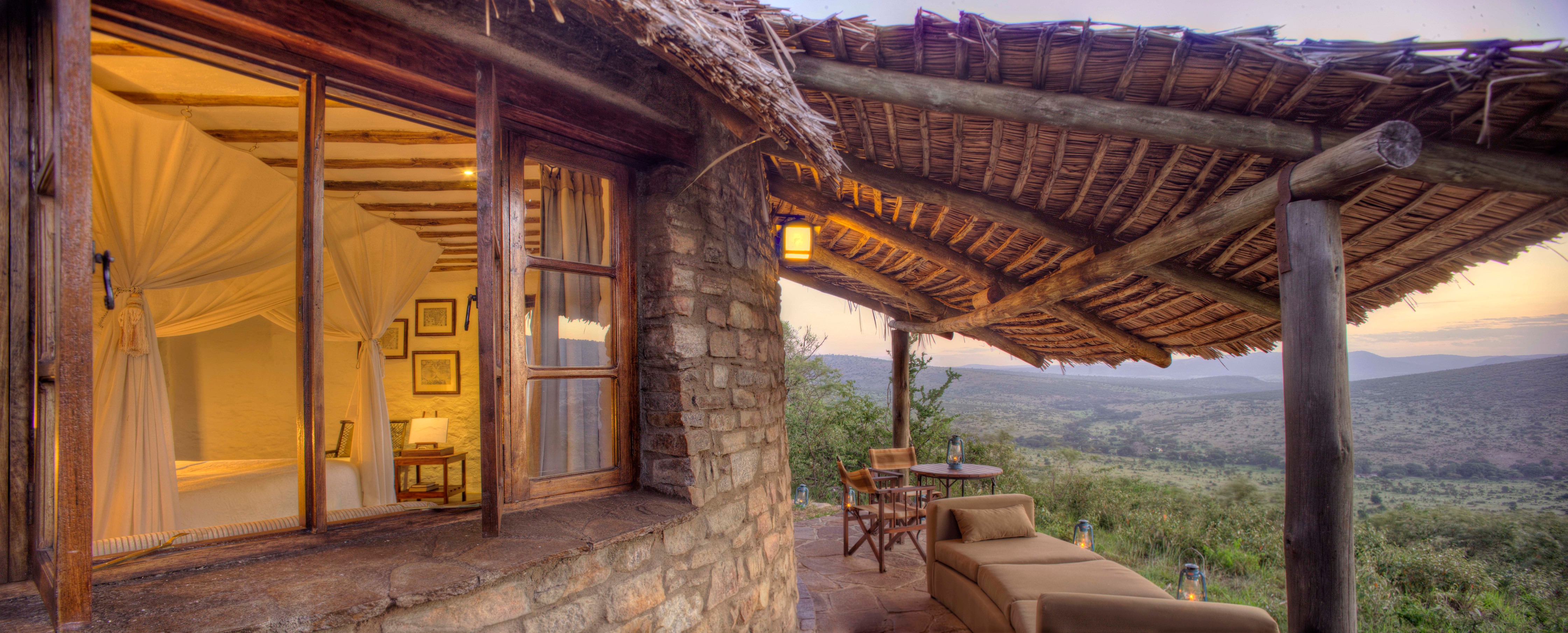
AndBeyond Klein’s Camp overlooks the corridor linking the Masai Mara and the Serengeti.
-
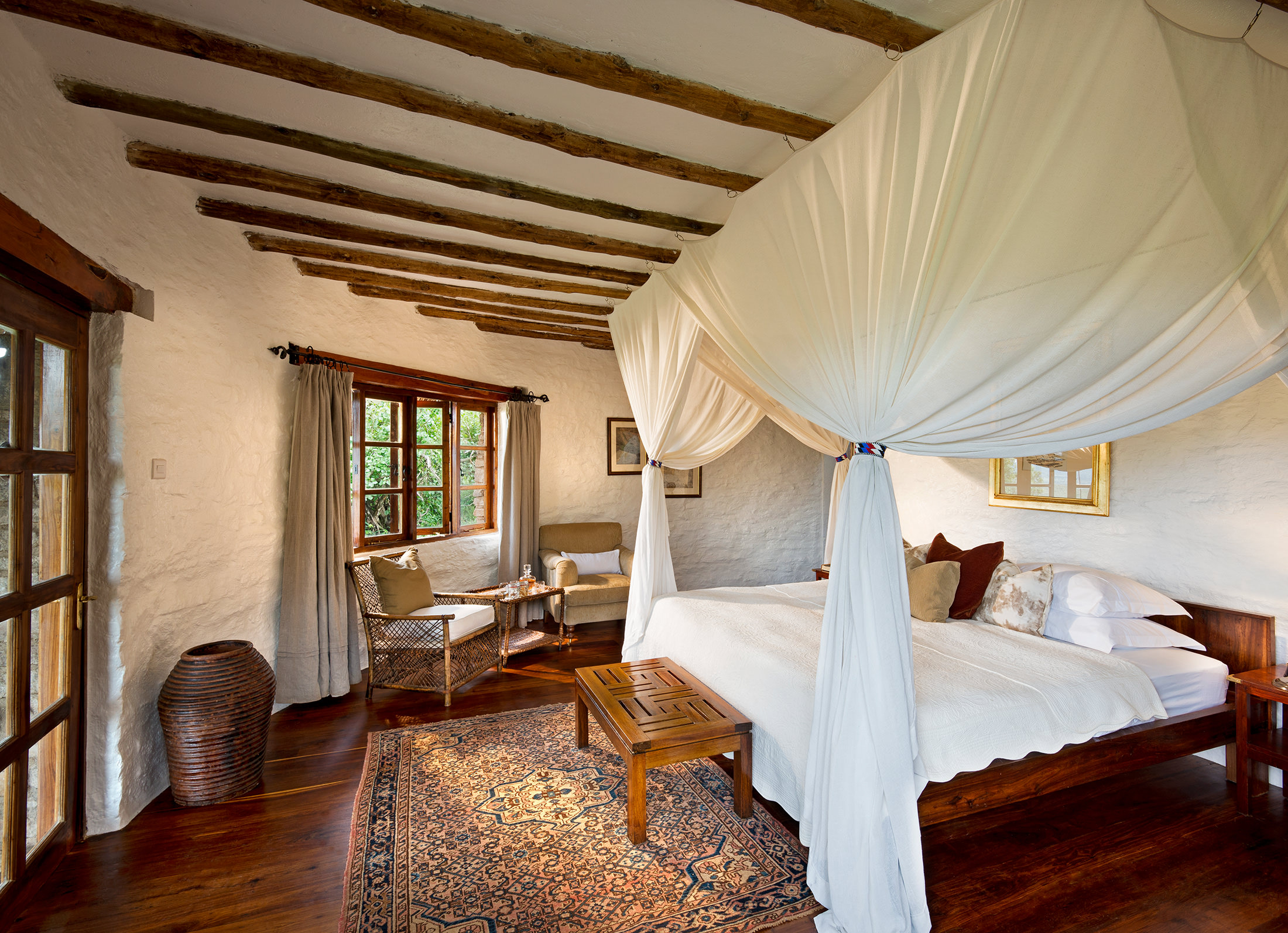
Klein’s was originally a hunting lodge and is thus reminiscent of colonial Africa with its old English charm.
-
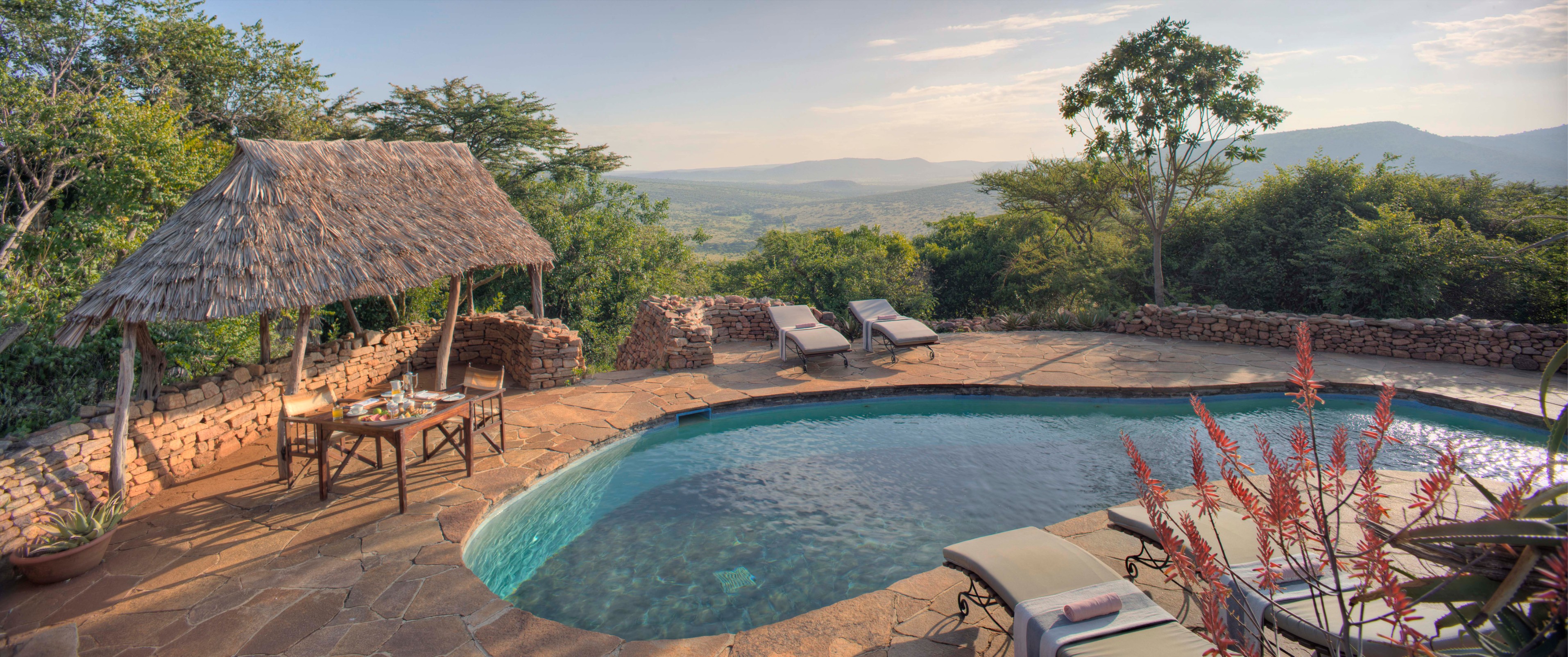
Private and remote, andBeyond Klein’s Camp offers the spirit of wild Africa.
-
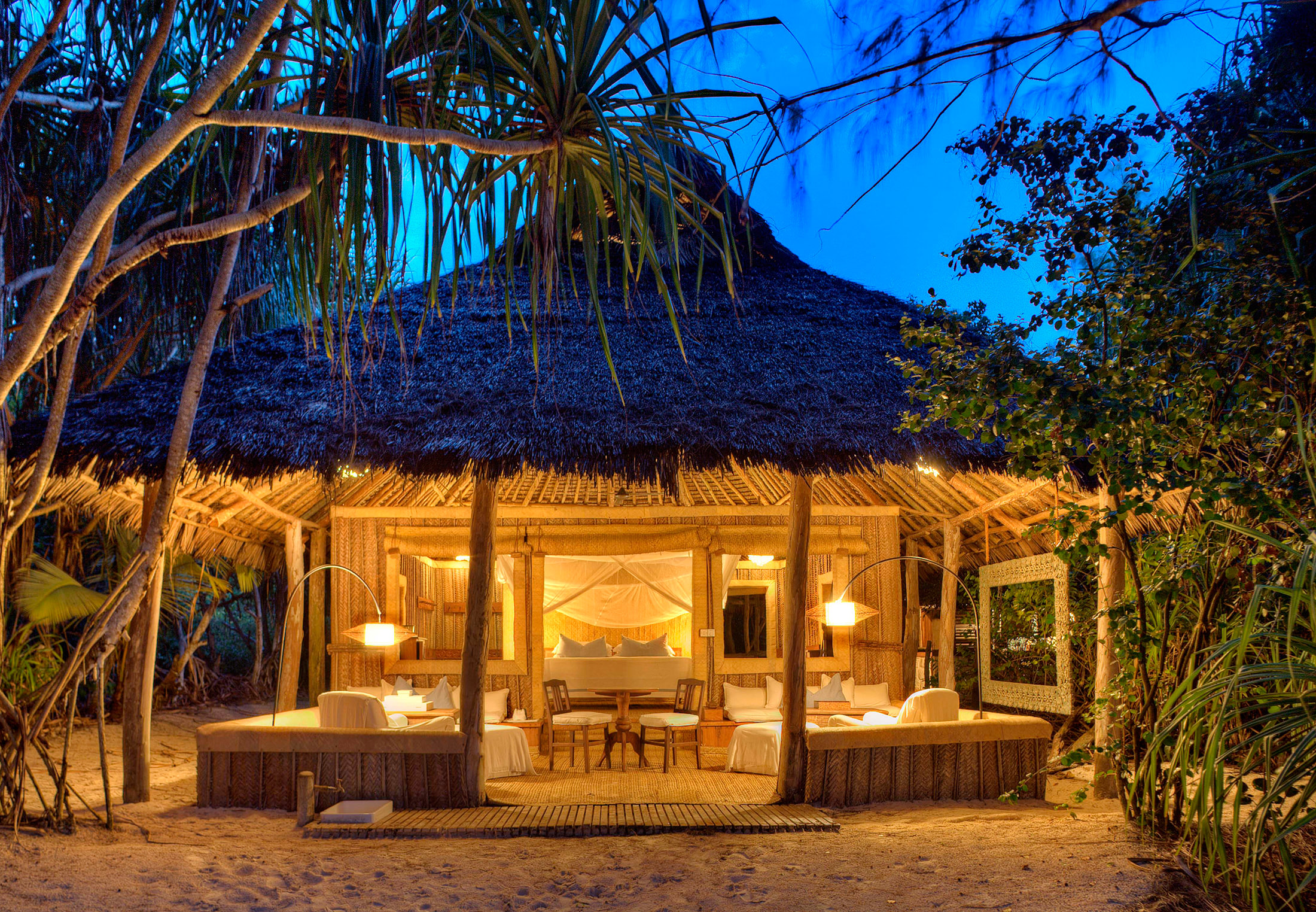
At andBeyond Mnemba Island, a private island off Zanzibar, there are only 12 beachfront palm-frond huts for 24 guests.
-

The walls and floors of the huts at andBeyond Mnemba are made of woven thatch, including the soaring roofs.
-
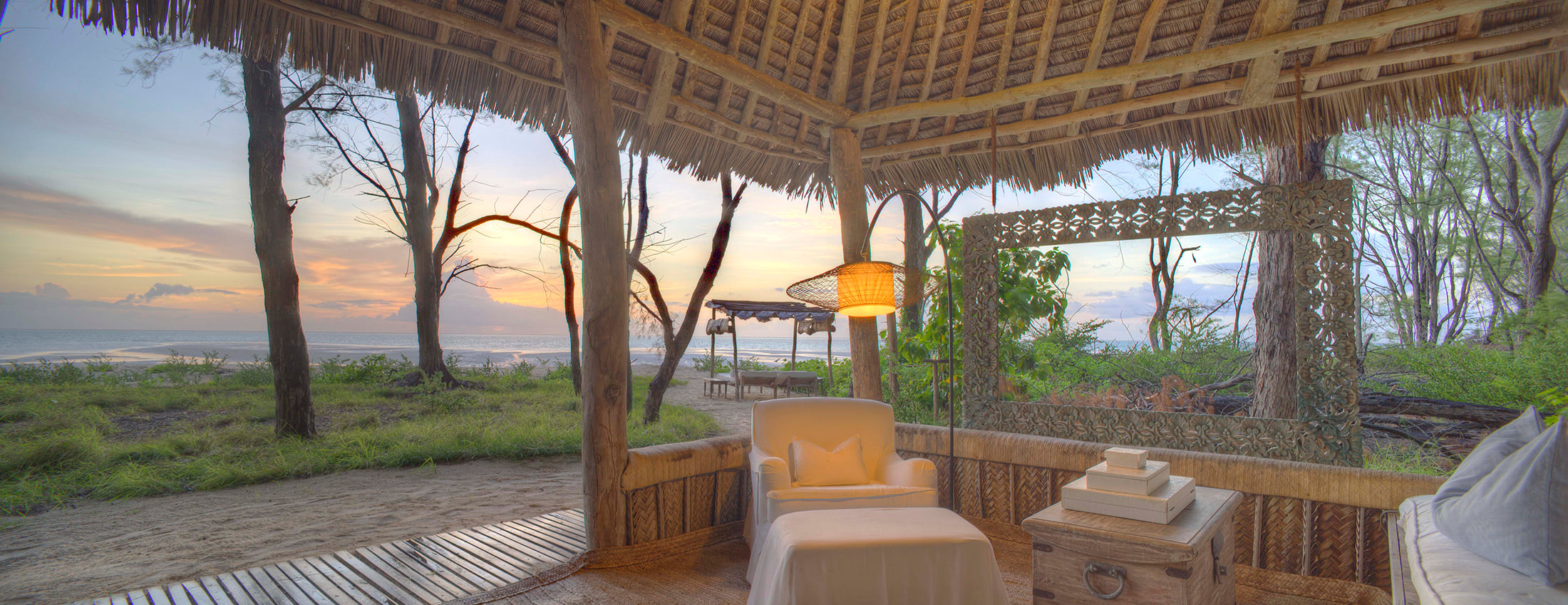
At andBeyond Mnemba an open-air “wall” in the living room is decorated with a hanging picture frame—a view of mangrove trees is the artwork.
The Lands of East Africa
In awe of nature with andBeyond.
The acacia tree is inextricably linked with the African savannah: vast, rolling grasslands studded with isolated trees—a landscape that is easily identifiable thanks to its topography. As a child growing up in East Africa’s Masai Mara National Reserve, Massek James Ole Kipiko studied in the shade of an acacia. The Masai Mara, known by locals as “the Mara”, is a large game reserve in southwestern Kenya that is, in fact, the northern continuation of Tanzania’s Serengeti National Park. Massek, as he is called, is from the formidable Maasai tribe, a semi-nomadic indigenous people who have retained most of their traditions, lifestyle, and lore, and live communally with the wildlife with which they co-exist.
On this day, Massek greets us as a guide for the safari outfitter andBeyond, dressed head to toe in tan-coloured guide gear in place of the brilliant red-and-blue–checked shuka (affectionately known as the African blanket) Maasai customarily sheath their bodies in; a beaded Maasai bracelet peeks from the cuff of his fleece jacket. The 38-year-old has been a guide for 11 years—all with andBeyond, a travel company that rents from the Maasai landlords for its two luxury camps in Kenya: andBeyond Kichwa Tembo Tented Camp and andBeyond Bateleur Camp. Massek’s first encounter with andBeyond was as “a young boy, spotting a truck in the distance,” he recounts. “I was barely tall enough to peer over the steering wheel, but I got a photo of myself in the driver’s seat.” Years later, having completed his guide training with andBeyond, upon assignment of his first vehicle, “I had another photo taken of me in the driver’s seat,” he says. “I keep both photos with me.”
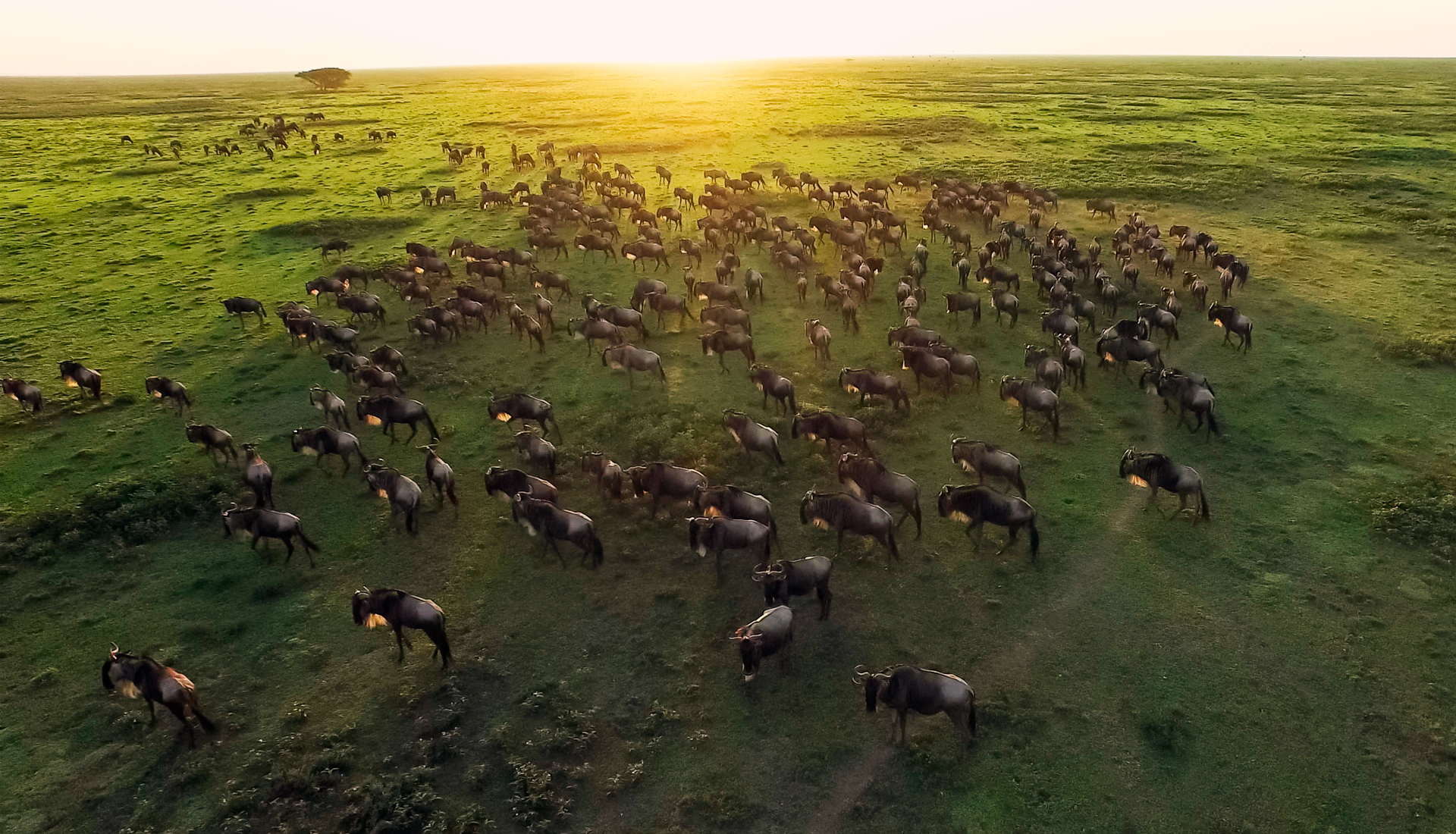
Migratory herds of 1.5 million wildebeest travel between the Masai Mara and the Serengeti each year.
The Masai Mara is one of Africa’s legendary safari destinations, steeped in tales of romantic journeys, perilous expeditions, and pioneers of conservation. East Africa is often described as the world’s best destination for game viewing, being home to the globe’s most extensive national parks and game reserves. As well, this is the land of the Great Migration: migratory herds of 1.5 million wildebeest and some 250,000 zebras travel between the Masai Mara and the Serengeti each year. Tucked away at the foot of the scenic Oloololo escarpment in the Masai Mara is the intimate andBeyond Bateleur Camp—a retreat for a maximum of 18 guests in nine tented suites. Bateleur Camp is vintage safari elegance: antiques and artifacts of bygone times commingle with plush seating and oversized leather chaises. Brass components, leather trunks, and framed maps are poignant reminders of Old World travellers who made a similar journey.
At camp, the day begins before sunrise with a wake-up call from the butler and coffee/tea service with biscuits placed in the butler hatch; by 5:45 a.m., Massek has the open safari vehicle prepped and ready. During the wet seasons—April to June and October to December—the scenery is at its most beautiful, as the dusty plains are transformed into lush grasslands, and the Mara is a verdant sight with colours ranging from snooker table shamrock to olive green. The reward of the rain (“fresh blessings”, as Massek terms the rain) is watching the landscape come to life. The big cats, including the lion, leopard, cheetah, and black-maned Mara lion, are one of the highlights of the Masai Mara spectacle, although the park is also home to other members of the Big Five: rhinoceros, elephant, and buffalo. There are many other diverse species, including topi, Thompson’s gazelle, and waterbuck. We drive quietly for a few kilometres before stopping by a pride of 20 lions. Massek points to a male. “He is so full of himself,” he notes of the cat’s confidence. Flies are buzzing around the lion’s face, signifying that he has recently eaten, the insects feasting on the salinity of the leftover blood. A male lion is always the first beneficiary of fallen prey. “Lions rule the land,” says Massek. “They kill to kill, but don’t make use of the entire animal. They are family,” he adds, gesturing to the pride, “but not friends.”
A good safari guide is the defining difference in the enjoyment, even the exhilaration, and certainly the memorability of an African safari. Since Massek grew up as a Maasai herder, he is a guardian of the Mara and his knowledge of birds, animals, plants, and the ecosystem is first-hand. “I cannot be away from the bush,” he acknowledges. “The pull to animals is greater than me.” His stories would work as great fiction, only they’re all true. At a bush breakfast on the flank of the Mara River, with a crocodile feasting on the carcass of a hippo in the waters, we share a meal with all the fixings and tablecloth service. Massek recounts the time he witnessed a martial eagle pick up a lion cub and fly with it for a few metres. Once it had landed, the eagle continued to pierce the cub with its talons until it died and the eagle ate it.
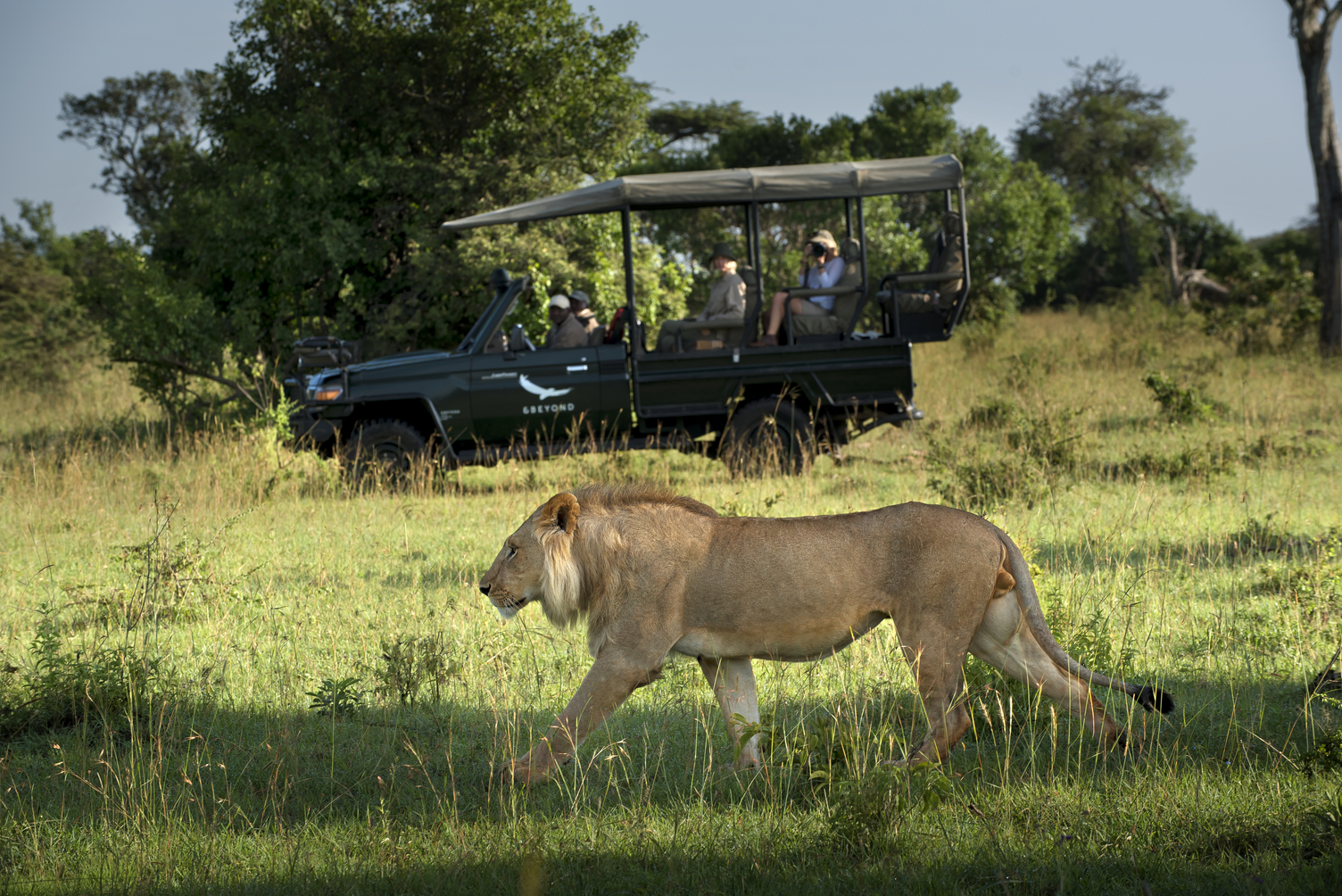
Big cats are one of the highlights of the Masai Mara spectacle.
During the mid-day heat, we retreat back to camp. Bateleur reopened this past March after a complete rebuild. Nearly 20 years after it first opened, this much-loved classic in andBeyond’s portfolio of luxury lodges has received a new look, care of South African design firm Fox Browne Creative. World maps and elegant dark brass fittings contrast with white marble surfaces; en suite bathrooms are flanked by private stone courtyards as well as indoor and alfresco showers. A sunken daybed on the private veranda encourages idle afternoons without spoiling the views from inside the tent. Maasai elements are used to accentuate: beaded belts cinch drapery, talking sticks are door handles. National Geographic magazines from the 1970s and ’80s are stacked; crystal decanters house lime cordial, with accompanying elephant-etched crystal glasses, and animal crackers are in the mini-bar; there is even a gym in a basket—weights, a yoga mat, and a skip rope—for those so inclined.
The matinee game drive delivers, due in no small part to Massek’s expert eye. His ability to decipher tracks is enviable; we watch him tear apart large chunks of elephant dung to reveal undigested fruits and seeds; I marvel at how he can tell how old a pile of animal scat is, down to hours, days, or weeks. Game drives are tailored to suit and four hours will pass in what seemingly feels like a moment. Dusk signals cocktail hour and driving over a bluff we come upon the setting for an African sundowner in the bush. There is the classic G&T, champagne, or a cocktail of your choice sipped as the sun sets over a classic safari landscape. Then, seemingly out of nowhere, shouts punctuate the still air. “Welcome to the Maasai disco,” Massek jokes, as Maasai tribal warriors emerge from the bush. Grunts follow chants and harmony, and the pounding of feet foreshadows the jumping dance with Maasai leaping in the air, a show of strength and stamina.
“Guiding is not just based on knowledge. It’s about people and the way you make them feel,” he explains.
To the south of the Mara is the andBeyond Mwewe Ranger Training School (Massek is a graduate), which is based at andBeyond Klein’s Camp bordering Tanzania’s Serengeti National Park. This is where Grant Telfer, regional trainer and private guide, crowns roughly six guides a year of the 400 that apply. “We are one of the few companies that invests so heavily in training, with three training schools,” says Telfer, a 15-year guiding veteran who grew up in Zimbabwe and leads a team that is 60 strong. “Guiding is not just based on knowledge. It’s about people and the way you make them feel,” he explains. “You don’t want to end up with a guide at the front of the car that just lectures you.” Training consists, first off, of a two-week period of “walking long distances and throwing in brain teasers. You make someone tired and you see if they can concentrate. You get to the real of a person when they are tired.” Those who are successful move on and spend three months out in the bush. There isn’t a specific formula that makes for a good guide, but the Telfer test is this: “I ask myself, ‘Can I spend three days in the safari vehicle bouncing around in the heat with tsetse flies all around me with this person?’ ”
AndBeyond Klein’s Camp overlooks the corridor linking the Masai Mara and the Serengeti. A private concession consisting of 10,000 hectares of wilderness, it is the ideal spot for the seasoned safari goer to marvel at the less noticed wildlife of the Serengeti. This private and remote camp offers the spirit of wild Africa. “We are situated in this little pocket of private land between the parks,” says Penny Parker, assistant lodge manager. What this means is that staying at Klein’s is your ticket to night drives, off-roading, and walking safaris, none of which are permitted in the park. You’re bound to feel as though you have this piece of the Serengeti all to yourself—especially because you won’t come across any other safari vehicle when exploring.
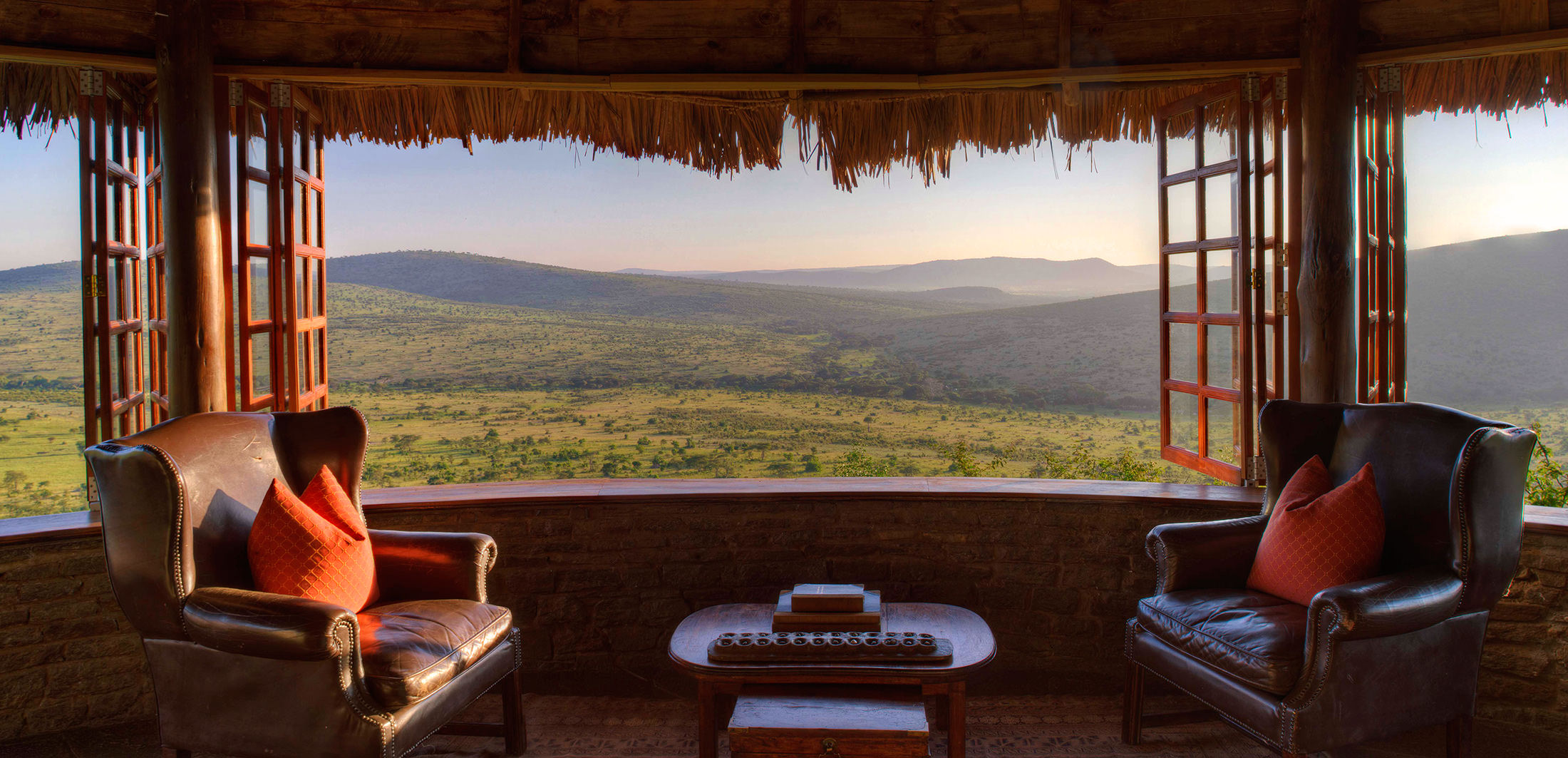
The lookout from andBeyond Klein’s Camp, Tanzania.
The position of the lodge, high on a hill, makes for unparalleled views of the Serengeti. Contemplating the silence of this enormous expanse of savannah, my eye spots upwards of 50 giraffes—and watching them run, it seems like they are moving in slow motion (one recent guest counted a group of 92). Klein’s was originally a hunting lodge and is thus reminiscent of colonial Africa with its old English charm. The 10 cottages of stone and makuti (thatch) that make up camp are spacious and have a laid-back feel; inside are wooden floors, a four-poster bed, and even a canvas, an artist’s easel, a sketch pad, watercolours, and pastels should you want to try your hand at sketching what you have seen. At the heart of the main lodge is an oversized circular firepit where fireside chats about the day’s events take place—being within five metres of a lion whose thunderous roar vibrated to my core; double rainbows that seemed to emerge from the bush and fill the sky; seeing a leopard with a full belly perched on the branch of a red thorn acacia and being awed that the animal had the strength to haul its kill, an impala, to such heights. After your final nightcap, don’t be surprised when you startle a bushbuck as your Maasai guard escorts you along the winding path to your cottage.
Since andBeyond’s beginning in 1991, the bateleur eagle has been part of the company logo. These birds rock from side to side as they soar. This, perhaps, is fitting since the company ethos is about maintaining a balance of caring for the land, wildlife, and people. As such, andBeyond works with the Africa Foundation, an independent non-profit organization that facilitates the socio-economic development of rural communities living in or close to the continent’s conservation areas. “In order for wildlife to thrive,” says Simon Saitoti, regional program officer for the Africa Foundation, “local communities need to experience the benefits of participation in conservation.”
Contemplating the silence of this enormous expanse of savannah, my eye spots upwards of 50 giraffes—and watching them run, it seems like they are moving in slow motion.
The Africa Foundation empowers communities to grow their own capacity and influence decisions that have a direct effect on their lives, both from a social and an economic point of view. “These are communities that are attached to the cow,” says Saitoti. “Meat, milk, and blood. But circumstances are forcing them to change. Cows no longer have that big land to graze, so the communities have to look for other sources of food, other sources for livelihood. To see the direct benefit of wild animals [through safari tourism] is for the community to see something physically change in the community.” And so, the idea of giving back. The Africa Foundation helps these communities in countless ways, but prioritizes building more water sources, building schools with dormitories, and developing small income-generating activities. Saitoti stresses the point that the Africa Foundation is teaching the communities how to do things rather than creating dependency. “The community needs to be in the position to maintain each project.”
A sojourn to the coast reminds you that the geography of East Africa is vast and varied. This part of the region encompasses a beautiful tapestry of land and sea. Off the Tanzanian coast is the island of Zanzibar and after a 90-minute drive from Stone Town, I wade knee-deep in the azure Indian Ocean to board a boat for a 15-minute crossing that takes me to Mnemba Island, a private island owned by andBeyond. At andBeyond Mnemba, there are no doors, no keys, and no worries; this is private island paradise. Once you reach Mnemba, staff take your shoes and you don’t need them again. For on the tiny island, which has a roughly 1.5-kilometre circumference, the paths are all sand; you dine with your toes in the sand and everyone goes barefoot, including the staff. For water enthusiasts, there is snorkelling, swimming (expect pods of wild dolphins to swim right past you), kayaking, a PADI school, and stand-up paddle boarding.
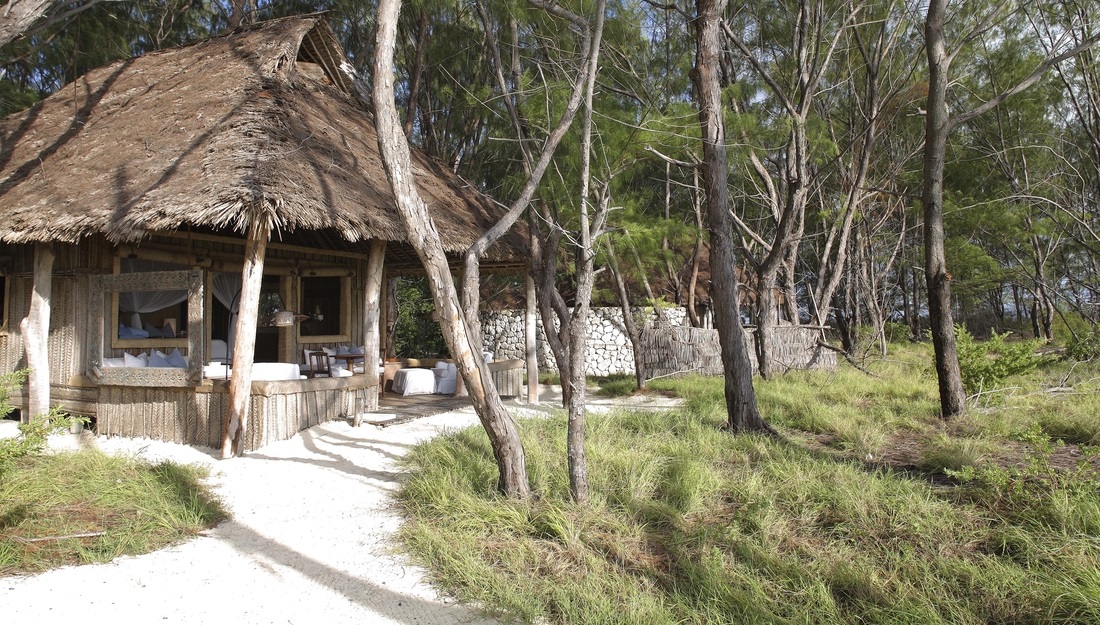
At andBeyond Mnemba, there are no doors, no keys, and no worries.
There are only 12 beachfront, palm-frond huts on Mnemba for 24 guests, fringed by a white coral-sand beach. The walls and floors of the huts are made of woven thatch, including the soaring roofs. An open-air “wall” in the living room is decorated with a hanging picture frame—a view of mangrove trees is the artwork. A covered walkway off the bedroom leads to an open-air bathroom with the most brilliant of showers lined with recycled glass beads. The experience is the closest you can come to living outside and comes complete with a foot bath at the entry for rinsing off sand. Ocean breezes complemented by whirling fans keep the space cool, and at night layers of mosquito netting draped over your king-size bed are solid protection from flying friends. You will hear the ghost crabs scuttling about (they don’t bite).
In fact, “Ghost crabs are a good indicator of a beach’s vitality,” says Dr. Tessa Hempson, a marine biologist employed by andBeyond. Hempson is piloting a marine conservation program working with the Department of Fisheries and members of local Zanzibari fishing communities as Mnemba is surrounded by a fringing reef and is a marine conservation area. Codes of practices are being implemented to protect the reef from being overexploited. “Immediate measures include not buying fish that feed off the reef,” she says, “and not buying fish under a certain size.” Hempson’s position is new for andBeyond, and together they are developing initiatives like Oceans Without Borders (of which Hempson is operations manager) to create marine-based conservation initiatives that include direct and socio-economic benefits to local communities while securing and improving the ecological status of the island—and beyond.
_________
Never miss a story. Sign up for NUVO’s weekly newsletter.






